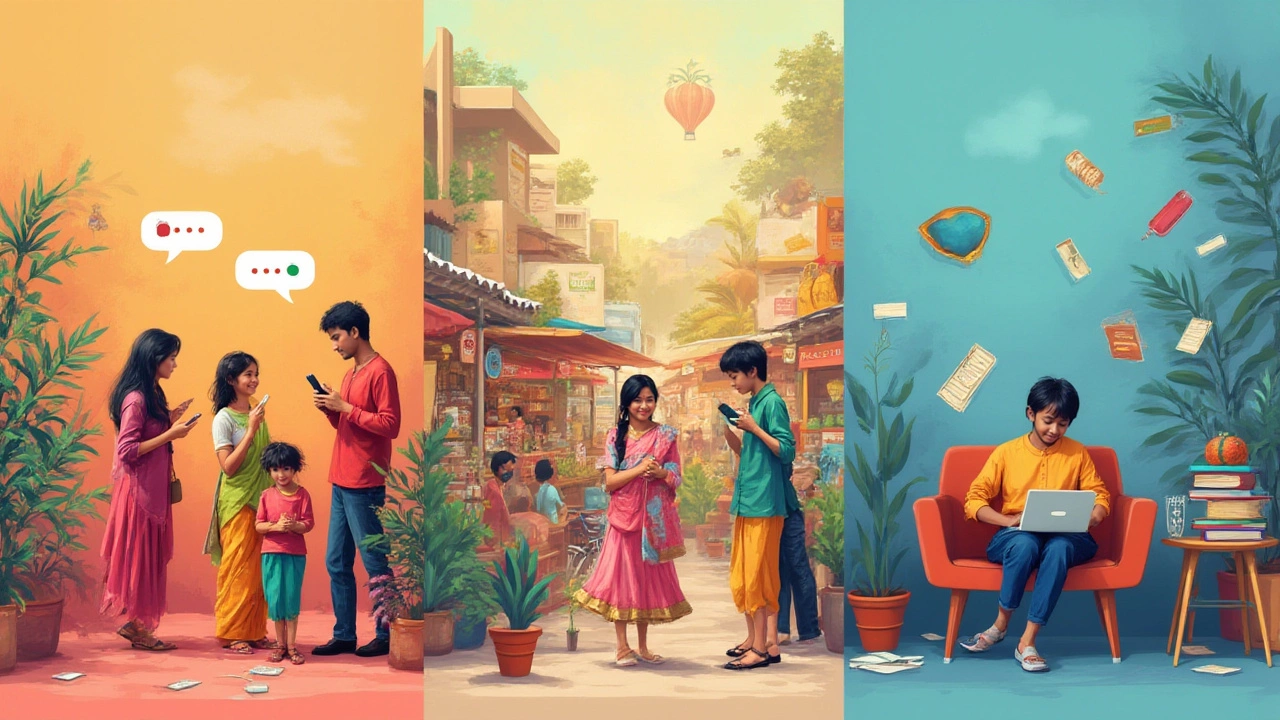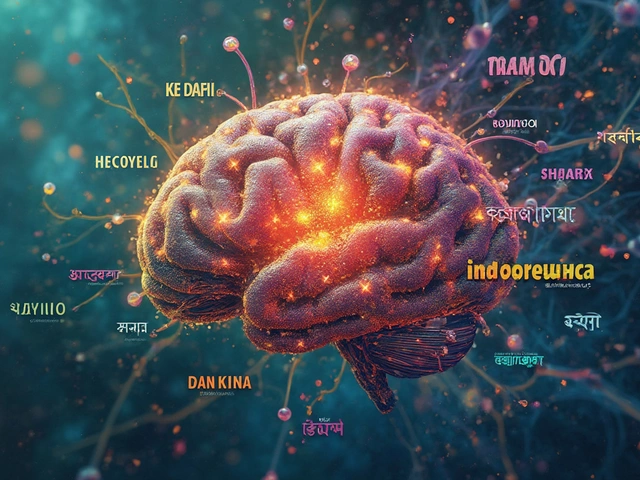If you’ve ever wondered why your phone is a magnet for your attention or how people went from couch potatoes to running online businesses from their kitchen tables, it’s all about the online platforms running behind the scenes. The Internet’s exploded into a universe packed with platforms, each feeding a different piece of your daily digital cravings—swapping memes, buying shoes, mastering Excel formulas, you name it. But not all platforms work the same way, and knowing their differences can actually help you make smarter choices. Forget the jargon—let’s just break it down to the three big types you bump into every day.
Social Platforms: Where Connections Begin
Social platforms are everyone’s hangout zone online. Think Instagram, Facebook, TikTok, and Twitter. These are much more than just places to see holiday snaps or videos of people falling off skateboards. Social platforms are where people gather, interact, share their lives, and get news, all in one buzzing feed. According to Statista, as of 2025, Facebook still leads with over 2.9 billion monthly active users, while TikTok’s rocketed to more than 1.1 billion. Why are these numbers so bonkers? Because people crave connection. We want to see what others are up to, message friends, debate the latest controversy, or spend hours doomscrolling (no shame, we’ve all been there).
The engine behind these platforms is something called the network effect. It’s dead simple—the more people who use the platform, the more valuable it is to everyone. Ever tried joining a new app where none of your mates are? Feels empty, right? That’s why big social platforms get even bigger. Social media also shapes everything from pop culture to politics. A meme can spark a global trend in hours, and a hashtag can galvanize support for social causes that cross borders. If you’re a business or influencer, a social platform is often the launchpad you need. Tools like Facebook Ads, Instagram Shopping, and deep insights are all built in. Brands never had it this easy to reach thousands with a single post.
But there’s a lot hidden beneath the surface. Algorithms decide what you see based on likes, clicks, and even how long you stare at a post. Ever noticed you keep seeing more dance videos after laughing at just one? It’s not by accident. It’s the algorithm feeding your interests. While this sounds cool, it can create echo chambers where you only see content you already agree with. That’s why experts recommend mixing up your follow list and being conscious about your feed. Privacy is another huge issue. In fact, in 2024, the Australian Competition and Consumer Commission fined Meta for alleged misuse of user data—highlighting the risk involved. So, tip for the wise: always fiddle with your privacy settings, use strong passwords, and double-check what you’re sharing publicly.
And it’s not all just for fun. Platforms like LinkedIn focus on professional connections, letting you network, job hunt, or even sell your own services. LinkedIn crossed 950 million members by 2025, showing even your career can rely on the right digital hangout. For those into building communities, Reddit is a hot pick. Its thousands of subreddits let you dive deep into anything from quantum physics to dog memes. You’ll find groups for every niche—no gatekeeping.
So, if you want to build relationships, launch a personal brand, join a movement, or just have endless entertainment, social platforms are the place to go. Just remember, you’re not just the user—you’re also the product, since most of these sites make money by selling your attention to advertisers. Get smart, and you’ll get the best from your favorite social platform.
Marketplace Platforms: Where You Buy, Sell, and Make Dollars
Marketplace platforms are the digital bazaars of today. Think Amazon, eBay, Etsy, Gumtree, and Facebook Marketplace. If there’s something you want to buy or sell—from rare retro sneakers to that old exercise bike collecting dust in your garage—this is your playground. The idea is simple: instead of a single store, a marketplace connects buyers and sellers in one spot. Amazon, for example, had over 300 million active users in 2025. That’s more people than the population of Australia more than 10 times over!
So, how do these work? Marketplace platforms act as middlemen. They don’t usually own the goods—they just make it easy for people to list stuff and for others to buy it. Take eBay. You can auction off your items, set a fixed price, or even haggle with buyers. Etsy is perfect for handmade or vintage goods, letting crafty Aussies sell jewelry, art, or knitted jumpers to buyers around the world. These platforms collect fees or small commissions for each sale. For example, eBay takes around 10% of the sale price on most categories, while Etsy’s fees stack up to about 6.5% plus a transaction fee.
Marketplace platforms aren’t just about physical goods. Upwork, Fiverr, and Airtasker are all about services. If you’re a freelancer, you can set up a profile and sell your digital skills—graphic design, copywriting, even voice acting. Airtasker’s a hit in Sydney, connecting people who need handy jobs done like flatpack furniture assembly or dog walking. In 2024, Australians completed over 2.3 million tasks on Airtasker, showing how big these service marketplaces have become.
Safety and trust are central to marketplace platforms. Reviews and ratings help users avoid scams, and built-in payment systems add a layer of protection. Still, scams can creep in, so being a bit skeptical always helps. Never pay outside official channels, and always check those reviews twice. On the plus side, marketplace platforms create chances for anyone to earn—students flipping clothes, parents running side hustles, artists getting global fans. Did you know more than 65% of Etsy sellers are women, and 97% run their shops from home? It’s the definition of flexible microbusiness.
Marketplace platforms gave classic classified ads a modern twist, and with a click, you can go from window shopping to negotiating deals with folks across town, or across the world. If you’re good at spotting bargains or have a knack for sales, there’s real money to be made. Keep an eye on seasonality: electronics and fitness gear spike in January, while homewares trend during winter. Being quick with replies and honest in your listings builds a reputation and helps you score those five-star reviews.
All up, marketplace platforms are equal parts treasure hunt and business opportunity. If you want to make space at home, turn a hobby into cash, or just find a crazy deal, start exploring. You’d be surprised what you’ll discover—if you know where to look.

Educational Platforms: Learning—Your Way, Anytime
Educational platforms are probably the least showy but have quietly changed lives the most. Look at platforms like Coursera, Udemy, Khan Academy, and Australia’s own OpenLearning. Whether you want to pick up digital marketing, learn a new language, or finish high school-level maths, there’s a class (or five hundred) waiting for you. During the COVID-19 lockdowns, online education in Australia spiked by 200%, and that trend is here to stay. Today, over 180 million people use Coursera worldwide, and Australians aren’t shy about jumping in.
The magic behind educational platforms is accessibility. No more waiting for nightly classes or shelling out mega-bucks for a private tutor. Often, you just need an internet connection and the right motivation. Many courses are free or cost less than a dinner out. Udemy’s average course sits around $20–$30. That’s peanuts compared to traditional education costs. If you want to specialize, you’ll even find degrees offered entirely online by top universities, which is life-changing for busy parents, rural Aussies, or anyone juggling odd-hour shifts.
So what do you actually get on these platforms? Most offer video lectures, interactive quizzes, peer forums, and even live sessions. Khan Academy is a not-for-profit gem, popular in schools for its bite-sized, easy-to-follow lessons (their math section alone has helped millions of kids pass exams). OpenLearning mixes social networking with education, so students collaborate, ask questions, and share resources. You’ll find all sorts—self-paced, instructor-led, short workshops, even micro-credentials recognized by employers.
If you’re into career changes or upskilling, these platforms are pure gold. Employers have shifted too; IBM ran a study in 2024 that revealed over 60% of hiring managers in Australia now see accredited online courses as solid proof of skill. We’re way past the days when online certificates weren’t worth the paper they were printed on. Looking to break into tech or creative industries? Places like Skillshare and FutureLearn let you build a shiny portfolio to show straight to employers.
There’s something for every learning style. Hate live lectures? Go self-paced and work in your pajamas at midnight. Love hands-on projects? Many platforms now have practical tasks, real-world simulations, and community-graded assignments. Worried about attention span? Khan Academy’s streak tracker keeps you hooked and accountable (it’s surprisingly motivating when it’s all about keeping up a streak).
But it’s not just about formal education. Australian parents use ABC Reading Eggs to help kids with literacy, while hobbyists jump into MasterClass for cooking, photography, and creative writing lessons taught by celebrities. The point is, learning doesn’t have to be boring, expensive, or out of reach. All these platforms need is your curiosity.
Comparison and Choosing the Right Platform
So, now it’s easy to spot the standout traits of each type of online platform. But the real kicker is choosing the right one for what you want to do. Whether you’re trying to kill some time, score a deal, or pick up an entirely new skill, knowing these differences helps you avoid frustration and wasted time.
| Platform Type | Main Purpose | Examples | Typical Users | Payment Needed? |
|---|---|---|---|---|
| Social | Connecting, sharing, building communities | Facebook, TikTok, LinkedIn, Reddit | Everyone from teens to professionals | Usually free, ad-supported |
| Marketplace | Selling and buying goods/services | Amazon, eBay, Etsy, Gumtree, Airtasker | Buyers, sellers, freelancers | Free to browse, fees on transactions |
| Educational | Learning skills, earning certifications | Coursera, Udemy, Khan Academy, OpenLearning | Students, job-seekers, hobbyists | Free and paid courses |
Start by asking yourself: what’s your goal? Want to stay connected with mates or make new ones? Social is your world. Looking to declutter and earn? Marketplace all the way. Need to boost your skills or finally master Excel? Head to educational platforms. Some platforms overlap—a Facebook group can teach you about investing, for example, but it’s not built for guided lessons. Just match your goal to the platform’s main strength.
Want to double dip? That’s normal, too. Many Aussies use multiple platforms for different reasons: scrolling Instagram after dinner, buying bargains on Gumtree, or learning coding at midnight. Just be aware of how each platform uses your data and sets its rules. Turning on two-factor authentication, automatic updates, and reading privacy guides helps keep your info safe, no matter where you spend your online time.
One handy tip: check ratings and reviews before you dive deep. Good platforms are usually transparent about features, costs, and user support. If you spot red flags—like scam reports or a ton of negative feedback—it’s OK to walk away. There are thousands of other fish in the Internet sea.

The Future of Online Platforms
The three major types of platforms keep evolving. What’s hot today might look old by next year, given the pace of tech change. Social platforms are already jumping into virtual and augmented reality, with Facebook (Meta) heavily pushing into the metaverse for more immersive experiences. Marketplace platforms now use AI-powered recommendations, chatbots for faster support, and even drone delivery trials—hello, instant gratification! Educational platforms continue breaking down barriers, with micro-credentials, industry partnerships, and more hybrid models blending hands-on projects with online learning.
In Australia, the Digital Economy Strategy aims for 75% of businesses to sell goods or services online by 2030, making marketplace platforms even more dominant. Schools are actively partnering with online platforms to deliver richer learning and help kids gain the digital skills they’ll need as adults. Nearly 40% of Aussie students used online classes as part of their standard curriculum in 2025. Meanwhile, social platforms are getting more accountability around privacy and hate speech, driven by both government pressure and public demand.
New trends are always popping up—live stream shopping (big in China, now picking up in Australia), vertical video courses on mobile, community-driven learning, and decentralized platforms free of big corporate oversight. It’s a wild ride, and new platforms emerge every month, aimed at specific hobbies, interests, professions, or lifestyles. The best strategy? Stay curious, keep experimenting, and don’t get too comfy on any single platform, because change is the only constant.
Whichever type of platform fits your goal or curiosity, the Internet has never been bigger—or offered more ways to connect, earn, and learn. Dive in, but remember: it’s always OK to question, compare, and move on when something new catches your eye.






Write a comment: